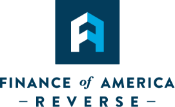Reaching a financially secure retirement in today’s economy can be challenging. Many people imagined they could rely on their 401(K) savings and their investment portfolio to finance retirement long enough to delay claiming Social Security and maximize benefits. Unfortunately, this financial plan is not panning out for many retirees. Funding retirements with investments can also be unpredictable during economic downturns. For individuals paying for retirement through withdrawals from their investment portfolios, one of the biggest risks is enduring a period of negative stock market returns in the early years of retirement.
According to the Motley Fool’s columnist Dan Caplinger, “The Average American Faces a $25,326 Retirement Shortfall. The biggest financial challenge workers face is how to make sure they save enough during their careers to cover their expected expenses in retirement.”1
The cost of healthcare in retirement can create major financial strife. Health issues cause some folks to have to retire early and begin taking Social Security sooner than expected to help pay for unexpected healthcare costs.
“About a quarter of recent retirees say their Social Security payment is less than they expected. And an even larger group — one third — say health problems are interfering with their retirement. Healthcare costs tend to rise at a rate much higher than general inflation — while retirees receive only modest, inflation-based bumps in their annual Social Security payments. An average 66-year-old couple retiring this year will require 59% of their Social Security benefits to cover their total health care costs in retirement, according to Health View Services, a Danvers, Mass.-based company that provides retirement health care cost data and tools to financial advisors.”2
Running out of finances in retirement – especially due to early retirement and healthcare costs – can cause retirees to wonder how they will be able to comfortably support themselves. If you are one of the millions of people trying to make retirement work there may be a real solution for you. Just like your 401(k), annuities, and savings, home equity is a powerful financial tool that can greatly enhance your retirement funding plan.
HECM and HomeSafe® Tools Make Retirement Work
With the rise in healthcare and insurance costs, planning retirement financial plan is different than it used to be. However, growing real estate markets around the nation are making home equity an invaluable part of retirees’ financial planning mix to make retirement work.
Delay Social Security and Grow Investments
Using a HECM (Home Equity Conversion Mortgage) or FAR’s proprietary HomeSafe reverse mortgage, people ages 62 and above are achieving their retirement financial goals in upwards of 30 years. Leveraging home equity early in retirement allows retirees to delay social security benefits and let their investment portfolio grow. These investments include 401(k), stock positions, etc. Additionally, delaying social security benefits increases the monthly payments later in life.
Protect Investments During Economic Downturn
Another benefit of employing a reverse mortgage at the beginning of retirement is the added protection for your investments during economic downturn. The loan can be used to supplement your monthly expenses during months when investments are undervalued, therefore allowing time for market correction before withdrawing the funds. Drawing investments during market trough periods greatly increases your chance of exhausting them during retirement. The following is a funding strategy example showing how leveraging home equity can greatly improve your ending portfolio value during a year of poor investment returns.
Case study example: using a reverse mortgage as alternative funding strategy
- A client retires with a $500,000 portfolio in the S&P 500
- Client withdraws 4% per year, plus increases each year as per Consumer Price Inflation Index
- Funding Source A (below) shows home equity line of credit withdrawals in the year following a negative investment return, or when the portfolio’s value is less than its original value
- Funding Source B shows all withdrawals from the portfolio
| Initial Portfolio Value | $500,000 | $500,000 | |
| Year | Rate of Return | Funding Source A | Funding Source B |
| 2008 | -37.00% | Portfolio | Portfolio |
| 2009 | 26.46% | Reverse Mortgage | Portfolio |
| 2010 | 15.06% | Reverse Mortgage | Portfolio |
| 2011 | 2.11% | Reverse Mortgage | Portfolio |
| 2012 | 16.00% | Reverse Mortgage | Portfolio |
| 2013 | 32.39% | Reverse Mortgage | Portfolio |
| 2014 | 13.69% | Portfolio | Portfolio |
| 2015 | 1.38% | Portfolio | Portfolio |
| 2016 | 11.96% | Portfolio | Portfolio |
| 2017 | 21.83 | Portfolio | Portfolio |
| Ending Portfolio Value | $958,502* | $574,384 | |
| LOC Balance | $135,128** | ||
*Does not include transaction of management fees.
**Based on scheduled withdrawals and accrued fees calculated with annual labor index, 2.25 lender margin and 1.25% MIP
In the preceding case study, the S&P 500 market endured a 37% loss in 2008. Leveraging home equity in 2009 through 2013 instead of withdrawing from a devalued portfolio allowed the stock market positions enough time to rebound, increasing the portfolio value over $384,000 by 2017. Even after subtracting the home equity line of credit, the homeowner still ended up with $248,000 more in that given time period than if they had relied solely on withdrawing from their portfolio.
Proven Retirement Planning Strategies
Using these active retirement planning strategies, seniors are freeing up cash reserves up front in their retirements and incorporating it into a plan that gives their investment portfolios the maximum amount of time to grow.
It is suggested that homeowners thinking about a reverse mortgage should consider discussing this option with their adult children. Many children see it as a very positive solution for their parents to help them be more financially sound and secure during their retirement years.
Just like your 401K, IRA, or annuities, home equity is a powerful financial tool that can greatly enhance your retirement funding plan. Contact a FAR representative today to learn more about the benefits of reverse mortgages and how they may help you secure long-term financial freedom in your retirement years.
* The borrower must meet all loan obligations, including living in the property as the principal residence and paying property charges, including property taxes, fees, hazard insurance. The borrower must maintain the home. If the homeowner does not meet these loan obligations, then the loan will need to be repaid.
1 Caplinger, Dan, “The Average American Faces a $25,326 Retirement Shortfall,” The Motley Fool, February 21, 2015. https://www.fool.com/retirement/general/2015/02/21/the-average-american-faces-a-25326-retirement-shor.aspx
2 O”Brien, Elizabeth, “2 Huge Things People Get Wrong About Retirement,” Time.com Money, Retirement/Income, September 19, 2017, http://time.com/money/4946948/retirement-income-planning-health-disappointing/
This article is intended for general informational and educational purposes only, and should not be construed as financial or tax advice. For more information about whether a reverse mortgage may be right for you, you should consult an independent financial advisor. For tax advice, please consult a tax professional.















I WANT TO KEEP UP TO DATE ON RETIREMENT TRENDS
Follow Us.